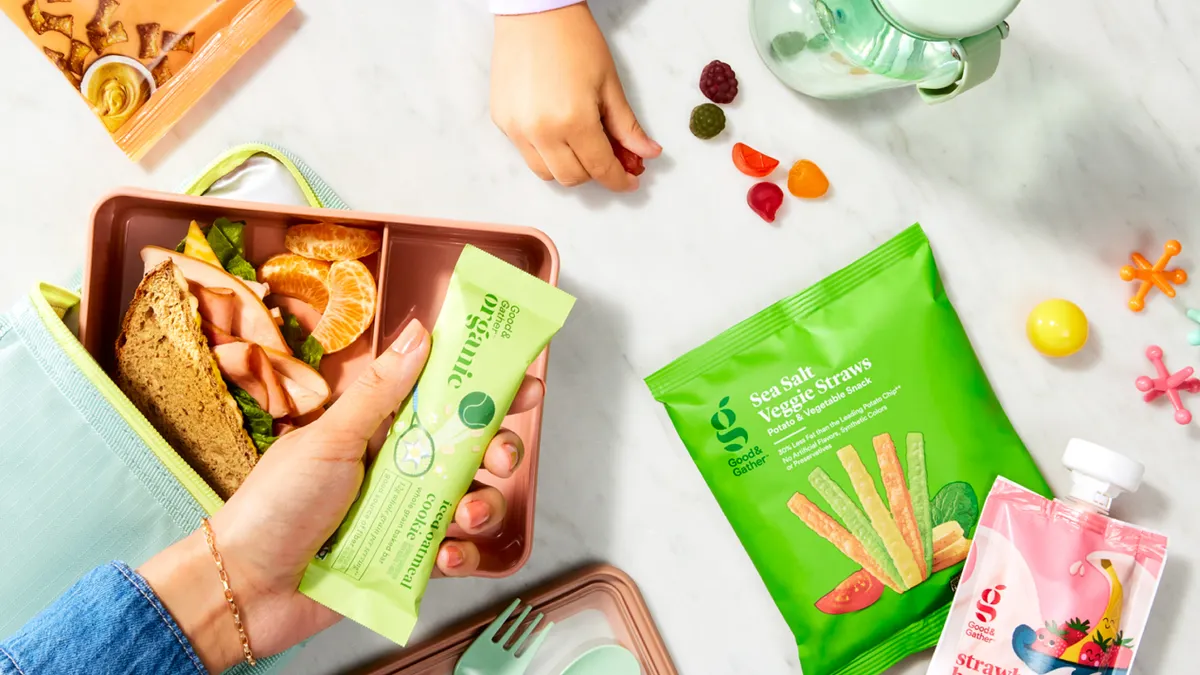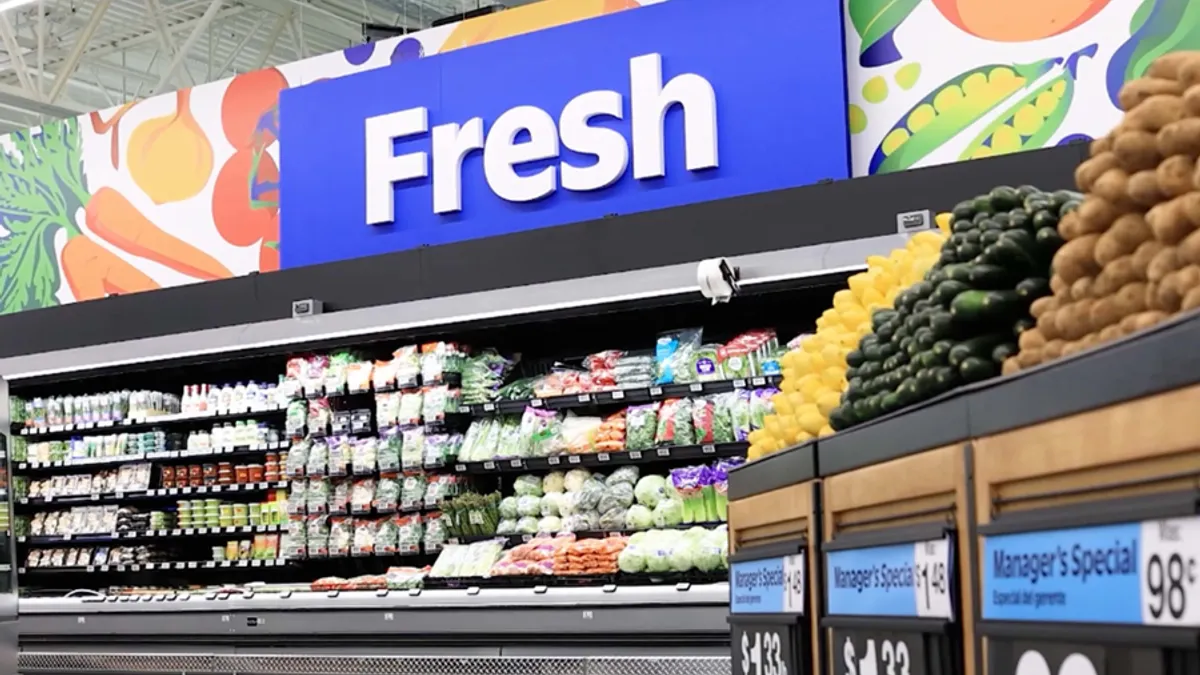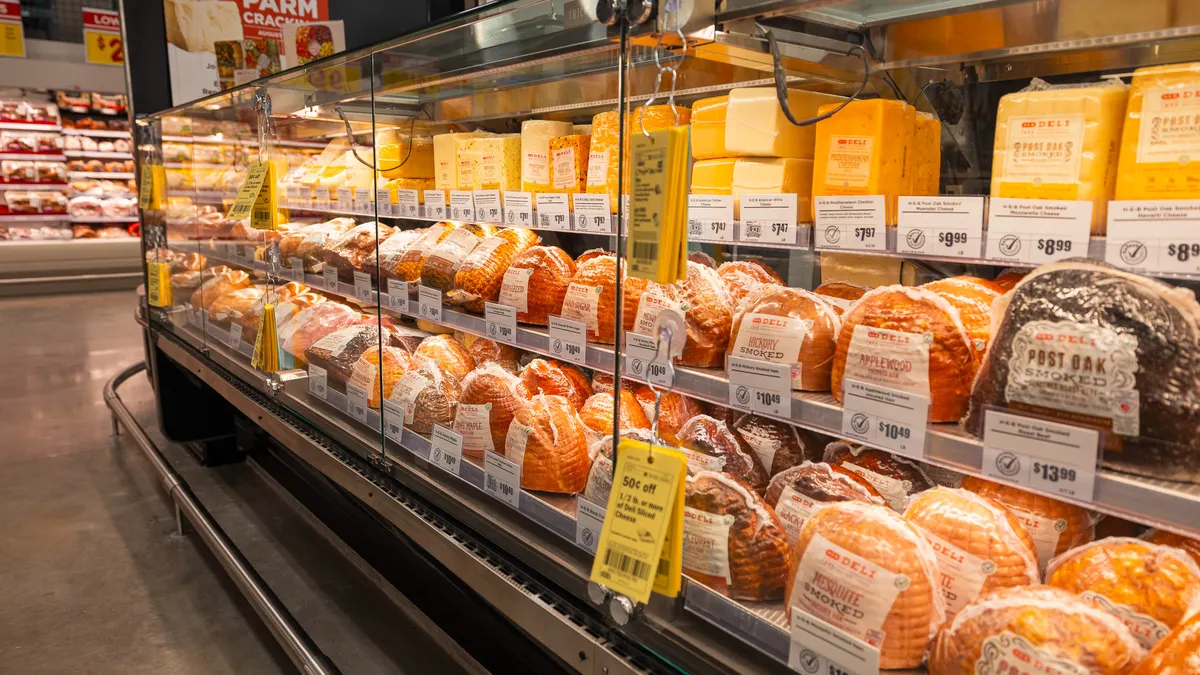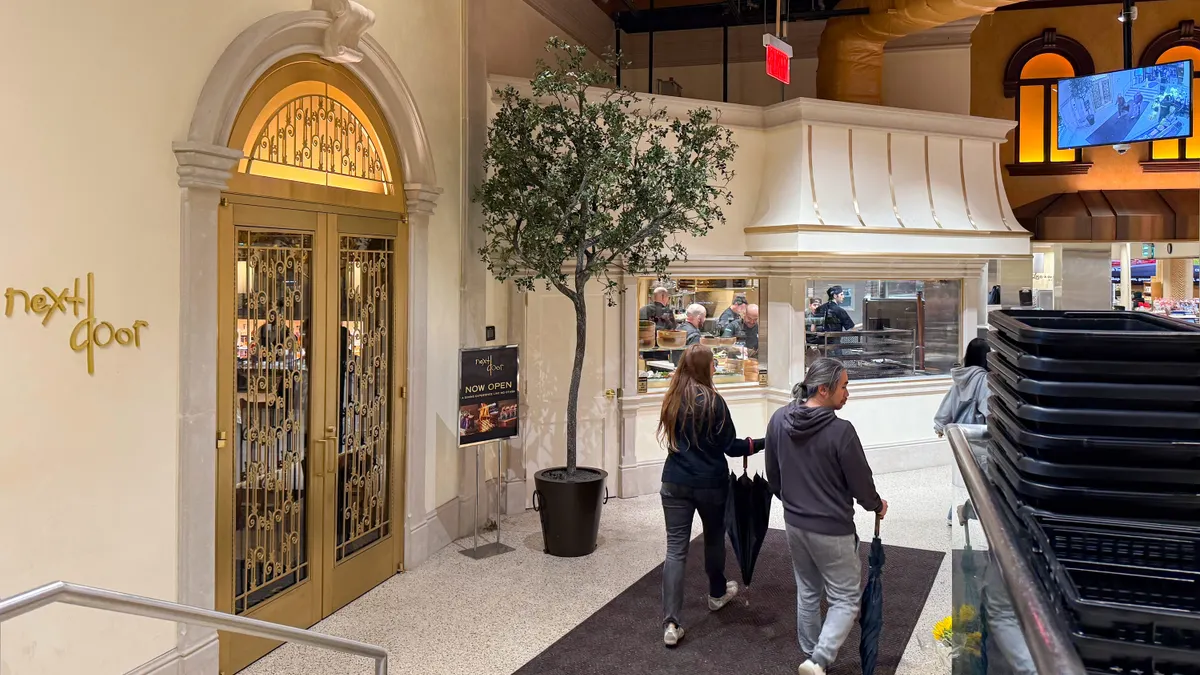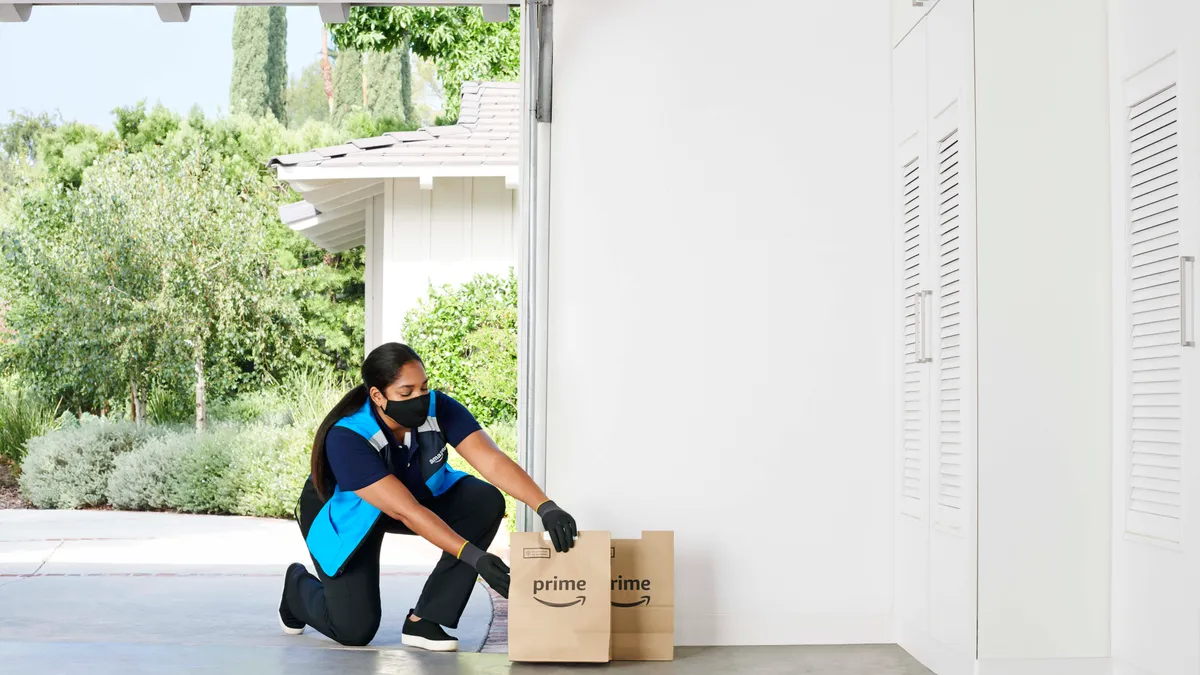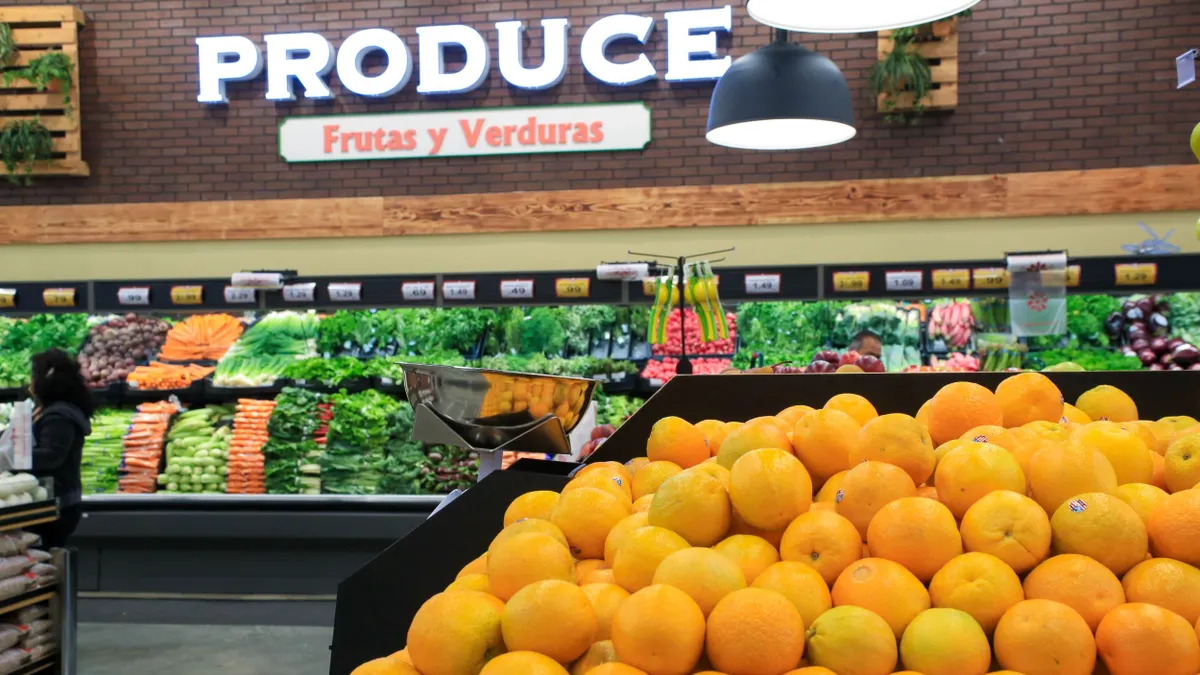Pardon the Disruption is a column that looks at the forces shaping food retail.
Ever since Amazon acquired Whole Foods Market in 2017, it has been itching to stock conventional products on the natural grocer’s shelves and make it more of a one-stop shop.
Now it seems the e-commerce giant is finally getting its way — sort of.
Earlier this month, Amazon unveiled a few pilot programs aimed at getting items like Coca-Cola soft drinks and Oreo cookies into Whole Foods shoppers’ carts — a strategy that acknowledges the fact that many of the natural grocer’s shoppers also buy not-so-natural products. In Chicago, Amazon is testing a new small-format store inside One Chicago, the same commercial space that includes a Whole Foods. The new store, Amazon Grocery, carries more than 3,000 SKUs of items, including name-brand packaged products Whole Foods doesn’t carry.
Beginning next year, a Whole Foods store in Pennsylvania will utilize an automated micro-fulfillment center (MFC) to top up shopping trips with conventional groceries as well as nonfood items found on Amazon.com. Shoppers can add these items — which don’t typically appear in Whole Foods stores — to online orders with just a few taps, or if they’re shopping in-person, they can order in the Amazon app and everything will be ready to pick up by the time they’re ready to leave the store.
These tests are part of Amazon’s push to integrate ordering across its various grocery brands, including Amazon Fresh and Whole Foods, and to better weave fresh groceries into its vast online marketplace. This includes a test program launching next year in Phoenix that will allow shoppers to choose from tens of thousands of groceries along with millions of Amazon.com products and have everything delivered together same-day.
Tying together these various marketplaces is a no-brainer for Amazon, which is a standout among retailers for its wide assortment and distribution muscle. It shows why the company remains a formidable online grocer. But the integration strategy at Whole Foods stores seems unnecessarily clunky and costly.
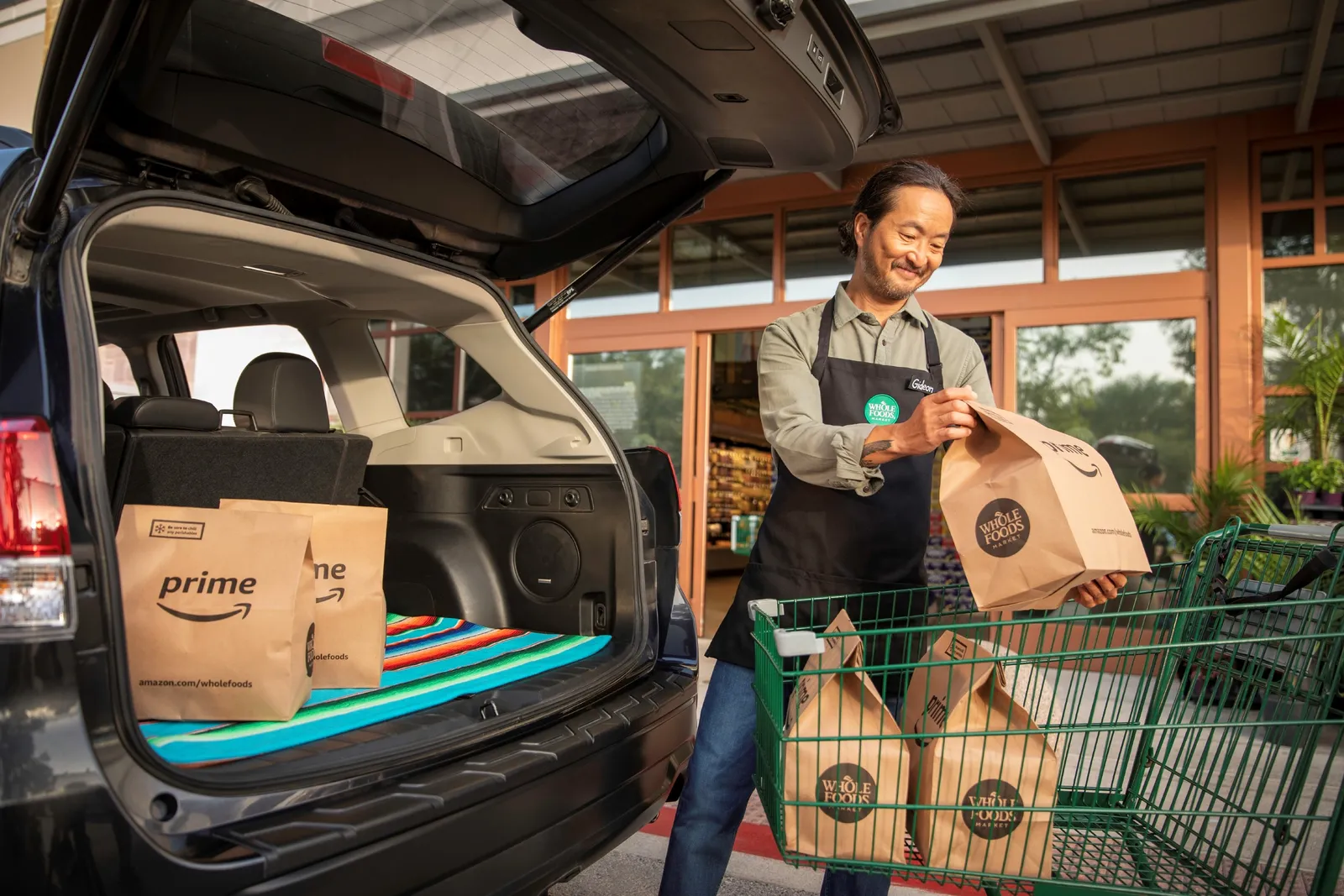
Giving Whole Foods shoppers easy access to a separate store that offers conventional items seems like a great convenience, but think about the customer journey for a second. That’s a separate transaction at a separate location for a customer who will presumably have at least one bag of groceries in tow from whichever spot they visited first. Tony Hoggett, Amazon’s senior vice president of worldwide grocery stores, who announced his impending departure from the company last week, positioned Amazon Grocery as a “topping up” stop for Whole Foods customers. So what will a Whole Foods shopper think after they schlep their bags into Amazon Grocery and can’t find the brands they’re looking for?
This frustrating scenario seems highly likely given one early report. Amanda Lai, director of the food industry practice with consulting firm McMillanDoolittle, who visited Amazon Grocery recently, wrote in a LinkedIn post that the small store’s assortment is differentiated from the Whole Foods upstairs. But she pointed out that it has some real “head-scratchers,” like stocking Prego as the only brand of pasta sauce (“in Chicago of all places!” Lai wrote) and Velveeta as the only brand of mac and cheese.
“I left feeling a bit puzzled, but it’s only been a week, and it’s clear that this tech-forward company is still finding its way in brick-and-mortar retail,” she wrote.
The MFC strategy at least brings the fulfillment of those conventional items into the store. But it, too, seems like a potentially clumsy experience for in-store shoppers, as it requires them to pause their shopping journey and place a separate order through the app.
Amazon and Whole Foods seem to be tiptoeing around the elephant in the room here. Why not just add conventional products to Whole Foods’ shelves?
The answer, of course, is that Whole Foods has for years maintained a firewall against products it deems unnatural. And for good reason. This is a powerful differentiator for consumers that prize natural and organic products in what’s become a ruthlessly competitive industry.
This seems to be why Amazon has left the strategy in place. But as a national retailer with more than 500 stores, Whole Foods is also competing with a wide variety of grocers and trying to draw in as many shoppers as it can.
Would core Whole Foods shoppers abandon the chain if they saw boxes of Cheez-Its and sleeves of Oreos on its shelves? Probably not. Consumers are used to seeing conventional and specialty products integrated at traditional grocery stores. Meanwhile, grocers like Fairway Market in New York and Metropolitan Market in the Seattle area have built loyal followings by stocking Hershey bars and Folgers coffee in the same space as locally sourced, hard-to-find selections in those same categories.
Suzy Monford, a former Kroger executive who has also served in top roles at specialty grocers PCC Community Markets and Andronico’s Community Markets, believes Whole Foods should find ways to bring conventional items to its shelves. She started her grocery career working at one of H-E-B’s Central Market locations in San Antonio, Texas, that for decades has sold many conventional products alongside specialty ones.
“There are 80 chefs working in the kitchen making chef-prepared food all day, every day, and there's also some Diet Coke,” she said. “And there's nobody gnashing their teeth when they walk in there.”
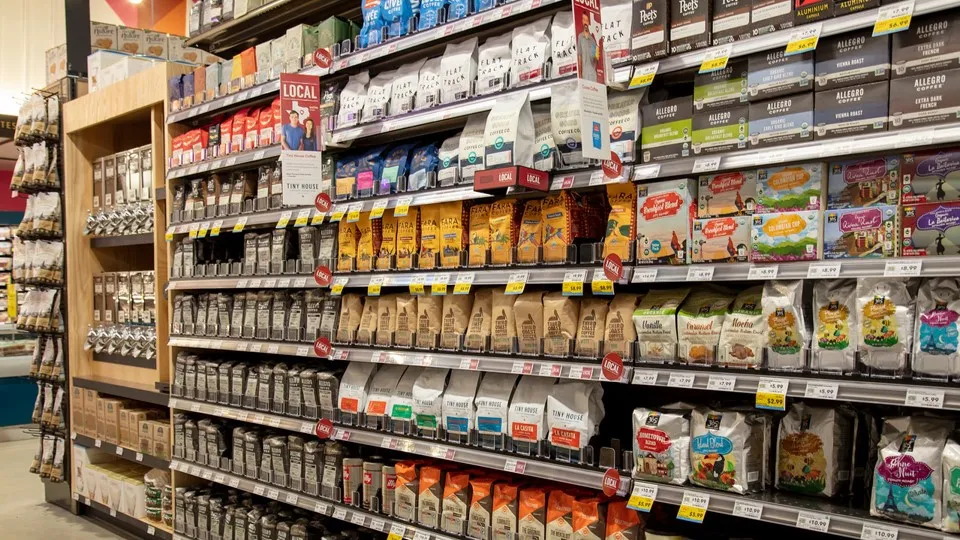
Make no mistake: Integrating conventional items into Whole Foods stores would be tricky and require a delicate merchandising touch. Whole Foods is and should continue to be primarily a specialty retailer. Adding and promoting too many conventional items — or the wrong items — could turn shoppers off.
The number of products offered, the selection and their location may need to change from store to store. Some stores probably shouldn’t integrate conventional products at all. Listening to shoppers and reading the customer data — something Amazon is supposed to be very good at — is vitally important in an effort like this.
Monford said that when she worked at Central Market, the store relegated conventional products to a supporting role. They didn’t get the premium eye-level shelf slots, and they weren’t promoted in the chain’s circulars. The goal was offering convenience at the margins while still keeping its specialty, gourmet identity front and center.
I don’t believe Amazon and Whole Foods should carry out this kind of integration strategy chainwide, if only because it’s way too early to know if this strategy will work. But they should at least test it in one or two stores. Try different assortments and merchandising options. Does a separate in-store market — which, funny enough, is how traditional retailers used to merchandise natural and organic products — work best? Or should items be mixed into the same aisles as specialty products?
Amazon is clearly determined to make Whole Foods more of a one-stop shop. This could be a really smart move, but right now it’s overly focused on satisfying leaders of both companies instead of finding the best solution for shoppers.
Taking a broader look, this don’t-step-on-anyone’s-toes approach speaks to a lack of leadership and cohesion between the two companies, according to Monford.
“Amazon and Whole Foods still feel like they're in a forced marriage, and I don't see who is the voice that's going to speak out and lead them forward,” Monford said.
Correction: This story has been updated to correct the location of the H-E-B Central Market store where Suzy Monford began her grocery career.







